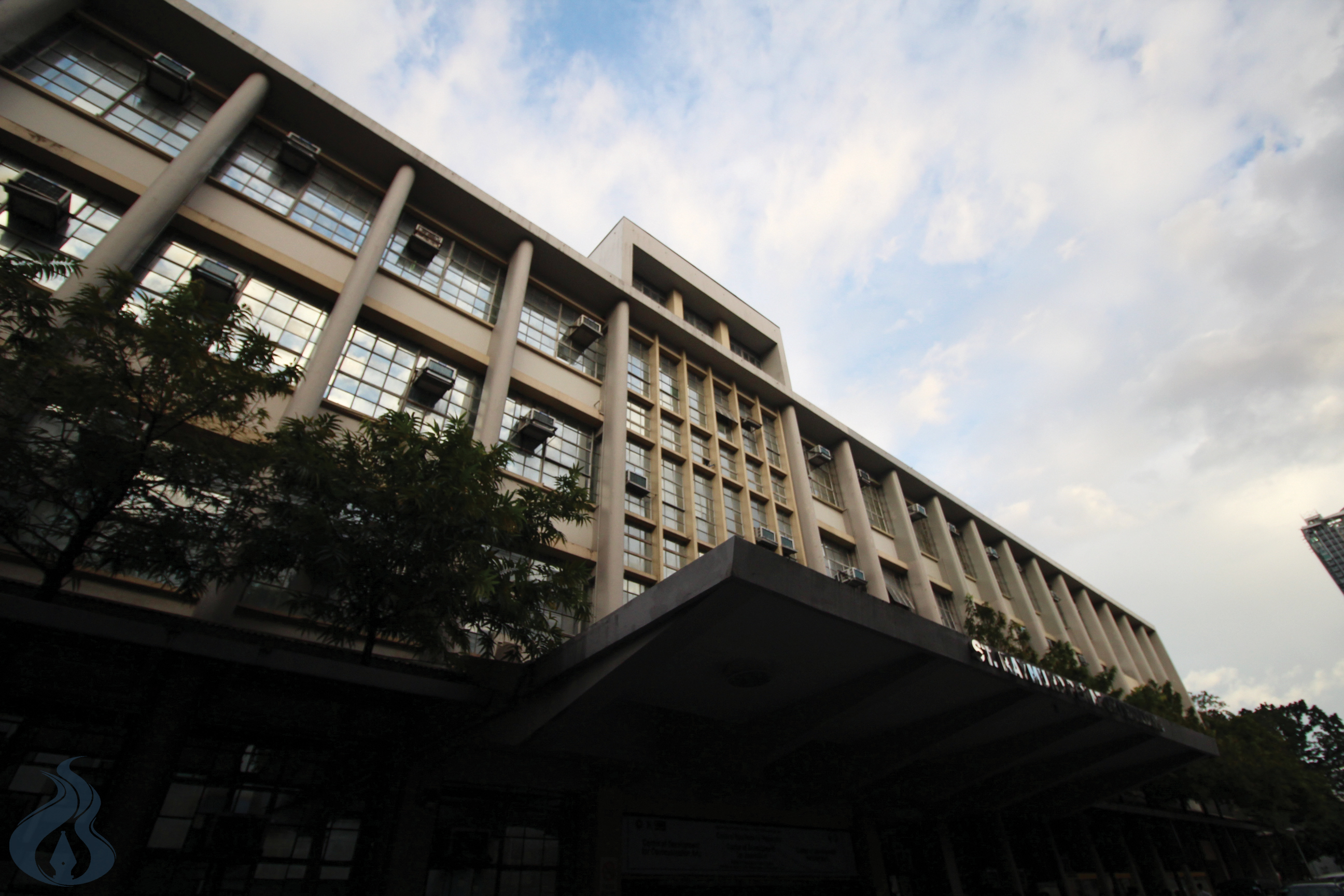
In 1964, with the merger of the Faculty of Philosophy and Letters and the College of Liberal Arts, the need for a publication that is to become the mouthpiece of the students arose, coupled with the restlessness of bearing the new identity of “Artlettes.”
Determined to unify the two reluctant University bodies, Rey Datu, then Arts and Letters Student Council Vice President, became the first editor in chief of the campus newspaper that would soon be known as The Flame.
The Flame, in its humble beginnings, was the child of mother publications Blue Quill and the Journal of Arts and Sciences. It eventually became part of the Artlet identity, on the lookout for the latest issues and trends prevailing in and around the Faculty, looking over student council elections, newly-implemented college policies, and curriculum revisions, among others.
In the middle of the 1970s, with the full avowal of Proclamation No. 1081 as the law of the land, The Flame switched to another medium that would be the predecessor of the magazine known today, becoming the Journal of the Humanities which featured profound essays and articles solicited from the Artlet community.
The publication was active in promulgating its opinions on issues regarding the government at this dark time in Philippine history, without compromising its role as a humanistic journal. Likened to Heraclitus’ symbol of motion by former Dean Magdalena Villaba-Cue, The Flame has developed a reputation for being a seeker of truth.
The mood was carried over to the 1980s, a time characterized by issues of labor unions’ demonstrations, political unrest, and coups. The Flame endured to be the torch, blazing a trail that would become one of the hallmarks of the publication: fearless reportage.
Battling against censorship, financial constraints, and fellow Artlets whose rebellious hunger for radical change slowly declined, The Flame continued to investigate the issues plaguing the country then. The publication released a lampoon issue titled The Phlegm, which satirized the general elections on May 11, 1992. The lampoon immortalized observed truths that stretched to become universal, and was asked to be taken in good humor and judgement.
The Flame continued to defy conventions, adding to the continuous outpouring of talents trained under the guidance of literary giant former Dean Ophelia Dimalanta.
With the turn of the next century, the headlines became inquisitive in search for answers. The Phlegm, Lagablab (the Filipino counterpart of the publication which put focus on national issues), and The Flame never wavered in challenging Artlets to become critical thinkers.
The journal eventually transformed into more accessible glossy magazines that are readily available in the newsstands at the lobby of the St. Raymund de Peñafort building.
To honor its golden anniversary, The Flame released a commemorative issue, intensifying its staffers and editors’ desire to serve the students and echo their sentiments to the administration.
From the newspaper, to the Humanities journal, to the magazine, a new age dawned for the future of The Flame with the launching of its official website, abtheflame.net.
This is The Flame, the official student publication of the University of Santo Tomas Faculty of Arts and Letters.
